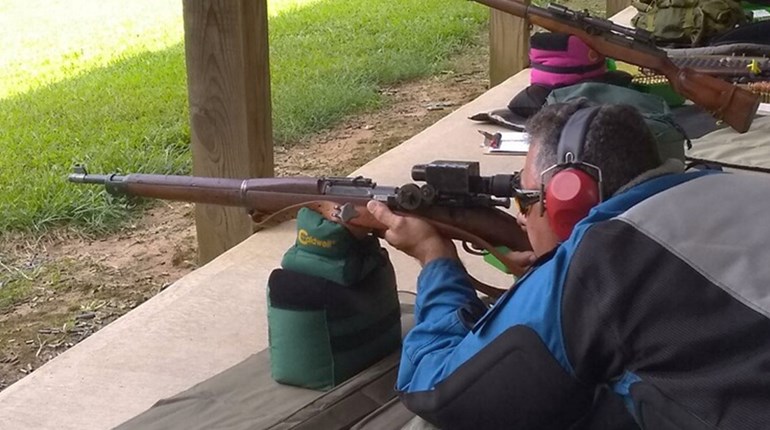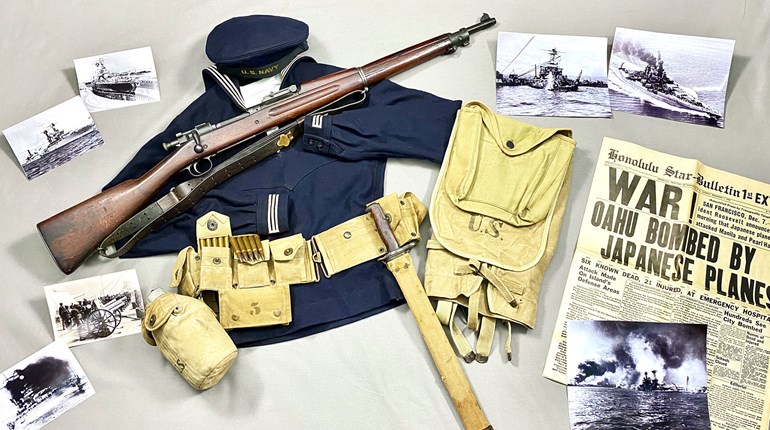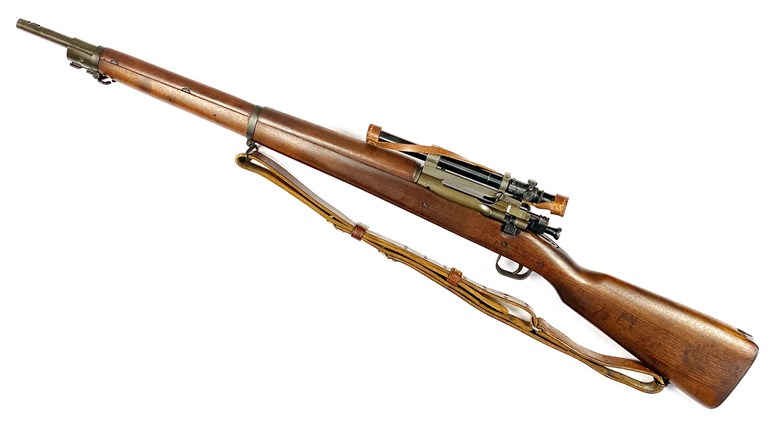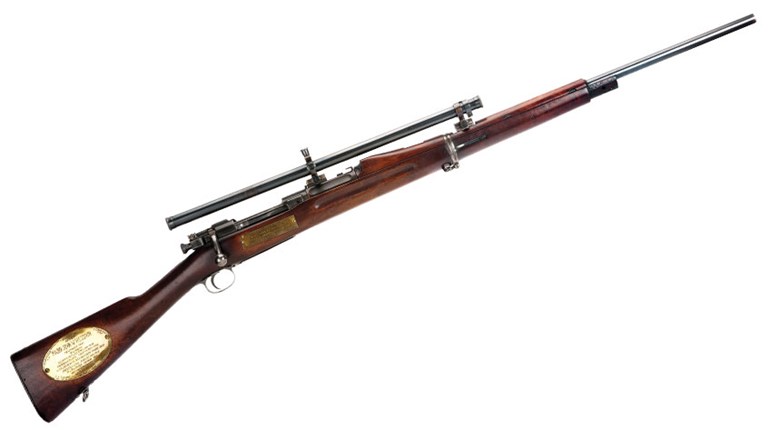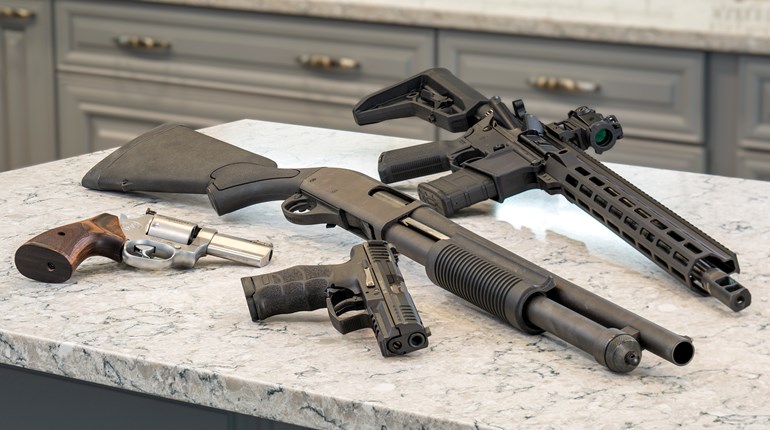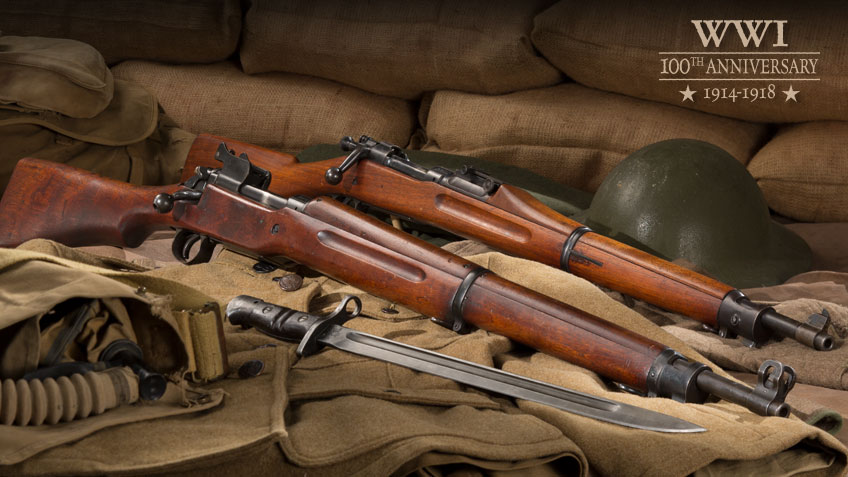
When the United States entered the First World War in April 1917, it faced a critical shortage of service rifles. With slightly more than 600,000 Springfield Model of 1903s in inventory at the time (in addition to about 160,000 obsolescent Krag rifles), the military had to confront a serious shortfall. Knowing that only a full-national mobilization could meet the personnel demands of the conflict, and that such a mobilization would put millions of Americans in uniform, clearly something would have to be done swiftly. Even with the Springfield Armory and Rock Island Arsenal running at maximum output, there still would not be nearly enough Model 1903s to equip the American Expeditionary Force (AEF) when it deployed to France.
Fortunately, the U.S. did not have to look far for a solution. At factories in New York, Connecticut and Pennsylvania, an Enfield-designed, .303-caliber service rifle designated P-14 was being produced under contract for the United Kingdom. Rather than attempt to convert one of those facilities to 1903 rifle production, a costly and time-consuming luxury that could not be afforded at the time, it was decided that the U.S. military would adopt a variation of the P-14 chambered for the American .30-caliber cartridge. As luck would have it, the P-14 was already well-suited for re-chambering to the U.S. cartridge because it was originally developed to chamber a rimless cartridge (.276 Enfield) and its receiver was physically strong enough to manage the pressure curve of .30-’06 Sprg.
The three producing contractors—Winchester Repeating Arms Company, Remington Arms Company and Midvale Steel & Ordnance Company’s Eddystone Rifle Plant—submitted production prototypes in May 1917 and thereafter began refining their rifles to meet component-interchangeability requirements. Although development did not proceed smoothly at first and delays were experienced, the U.S. Army ultimately standardized it as United States Rifle, Caliber .30, Model of 1917. In the titanic battles that would be fought by the American Expeditionary Force in 1918, the 1917 would serve alongside the 1903 rifle and prove itself every bit an equal.
These two rifles chamber the same potent cartridge and they resemble one another in terms of general anatomy, but they also differ from one another in important ways. First of all, the 1903 is a cock-on-open action whereas the action of the 1917 is cock-on-close. Secondly, the 1903 is slightly shorter at 43.2 inches overall length compared to the Enfield’s 46.3 inches. Because it is longer, the 1917 is a heavier firearm at slightly more than 9 pounds compared to the 1903’s 8.7 pounds. Sights mark another noteworthy difference between the two designs. The 1917 incorporates a longer sight radius, due to the fact that its rear-sight assembly is mounted on the receiver instead of on the barrel the way it is on the 1903. For the 1917 rifle, the rear sight features a fixed battle aperture set for 400 yards and a flip-up, slide-adjustable aperture with graduations from 400 out to 1,600 yards. On the 1903 rifle, though, the rear sight assembly integrates a fixed U-notch battle sight and a fully adjustable flip-up ladder using a sliding bar equipped with both a peep aperture and U-notch with graduations from 300 to 2,850 yards. The Enfield’s sights are also less vulnerable to damage than the 1903’s thanks to steel ears protecting the front blade and rear adjustable ladder assembly, a feature offering an advantage in terms of overall battlefield ruggedness.
Aside from those differences, the 1917’s barrel is 2 inches longer than the 1903’s 24-inch barrel and the 1917’s bolt handle features a dog-leg bend that places the shooter’s finger closer to the trigger. Other than that, another noteworthy difference is in magazine capacity. The 1917 rifle is stripper-clip-charged just like the 1903, but it can accommodate six cartridges instead of the ‘03’s five.
The troops issued the 1917 rifle in action with the American Expeditionary Force in France liked it and left no negative reviews. By the conclusion of hostilities, slightly more than 800,000 1917s had been issued to combat troops with an additional 322,292 units in unissued reserve in Europe. Those numbers exceeded the quantity of 1903 rifles used by a factor of three to one. That is not to impugn the battleworthiness of the 1903—that is just to say that 75 percent of the rifles arming the AEF were Model 1917s. Nevertheless, both rifles provided U.S. troops the primary tool they needed to succeed in combat on the Western Front. Both rifles offered rugged reliability and accuracy, and together provided the numbers needed to equip the fighting force that represented the United States through to November 1918. They armed Soldiers, Sailors and Marines for the duration of the war.
They fought from Cantigny to Belleau Wood, from Château-Thierry to the Argonne Forrest. They crossed the Marne, the Meuse, the Moselle and eventually the Rhine. They helped bring about the Armistice of Compiègne and they armed part of the army of occupation that administered the peace of Versailles, imperfect as it may have been. These superb rifles are still around today, 100 years later, and they preserve the memory of the Americans who fought “The Great War.”












